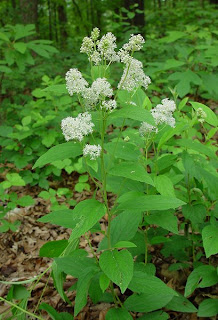QUASSIA

Latin Name: Picrasma excelsa
Alternate Names: Bitter Wood, Jamaican Quassia, Bitter Ash
Family: SIMAROUBACEAE
Parts Used: Chips of wood, inner bark.
Properties: Anthelmintic, Bitter Tonic, Cholagogue, Febrifuge, Laxative, Sialagogue, Stomach Tonic, Tonic.
Internal Uses: Anorexia, Dysentery, Dyspepsia, Fever, Malaria, Parasites, Rheumatism, Worms
Internal Applications: Tea, Tincture, Capsules.
Its effectiveness against parasites includes threadworms, Giardia and amoebas. The quassinoids are being investigated for their effects against leukemia. The tree itself is resistant to pests so it is not surprising that it is an antiparasitic healing agent.
Its effectiveness against parasites includes threadworms, Giardia and amoebas. The quassinoids are being investigated for their effects against leukemia. The tree itself is resistant to pests so it is not surprising that it is an antiparasitic healing agent.
Topical Uses: Dandruff, Insect Repellent, Lice, Worms
Topical Applications: Use in wash and lotions agains lice and as an insect repellent. Used in enemas to get rid of intestinal worms. Hair rinse for dandruff.
Culinary uses: Bitter flavoring for soft drinks, bitter tonics and liqueurs.
Chemical Constituents: Quassin, alkaloids, thiamin.
Contraindications: Large doses may cause vomiting.
Comments: Native to the Caribbean and the American tropics, Quassia is named after a native healer (a Guyanan slave) named Quassi who introduced Europeans to the health benefits of the tree. The genus name, Picrasma, is from Greek and means 'bitter taste'. It is considered one of the safest insecticides. It kills a wide variety of insects, but spares beneficial ones such as ladybugs. Organic gardeners soak the wood chips in water, strain them and use the liquid as a spray to deter aphids, caterpillars, leafhoppers, mealy bugs, sawflies, slugs and thrips. It is also used in making fly paper. Quassin is about 50 times more bitter than quinine.
The species Picrasma excelsa was formerly known as Picraenia excelsa.
The species Picrasma excelsa was formerly known as Picraenia excelsa.

